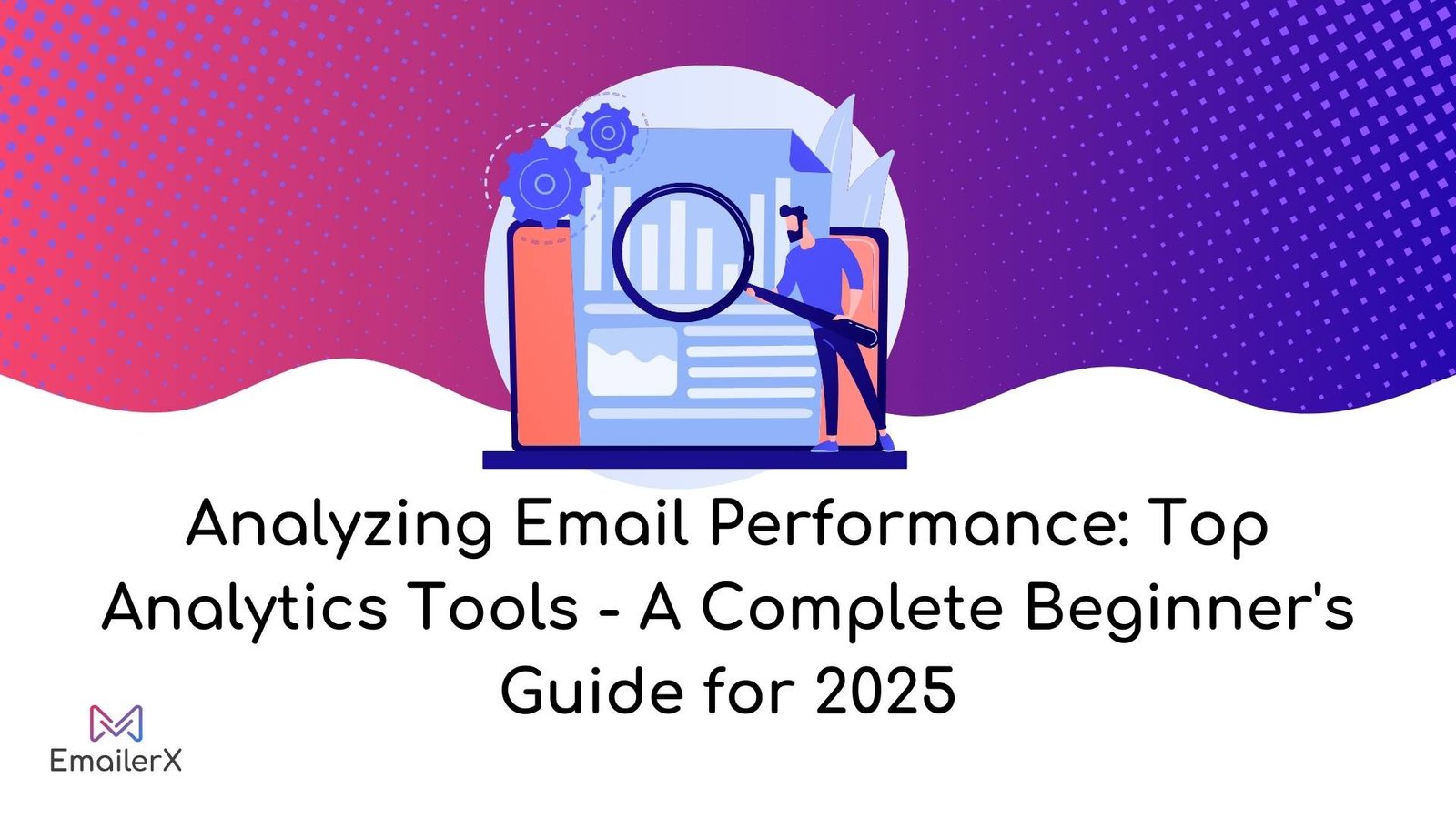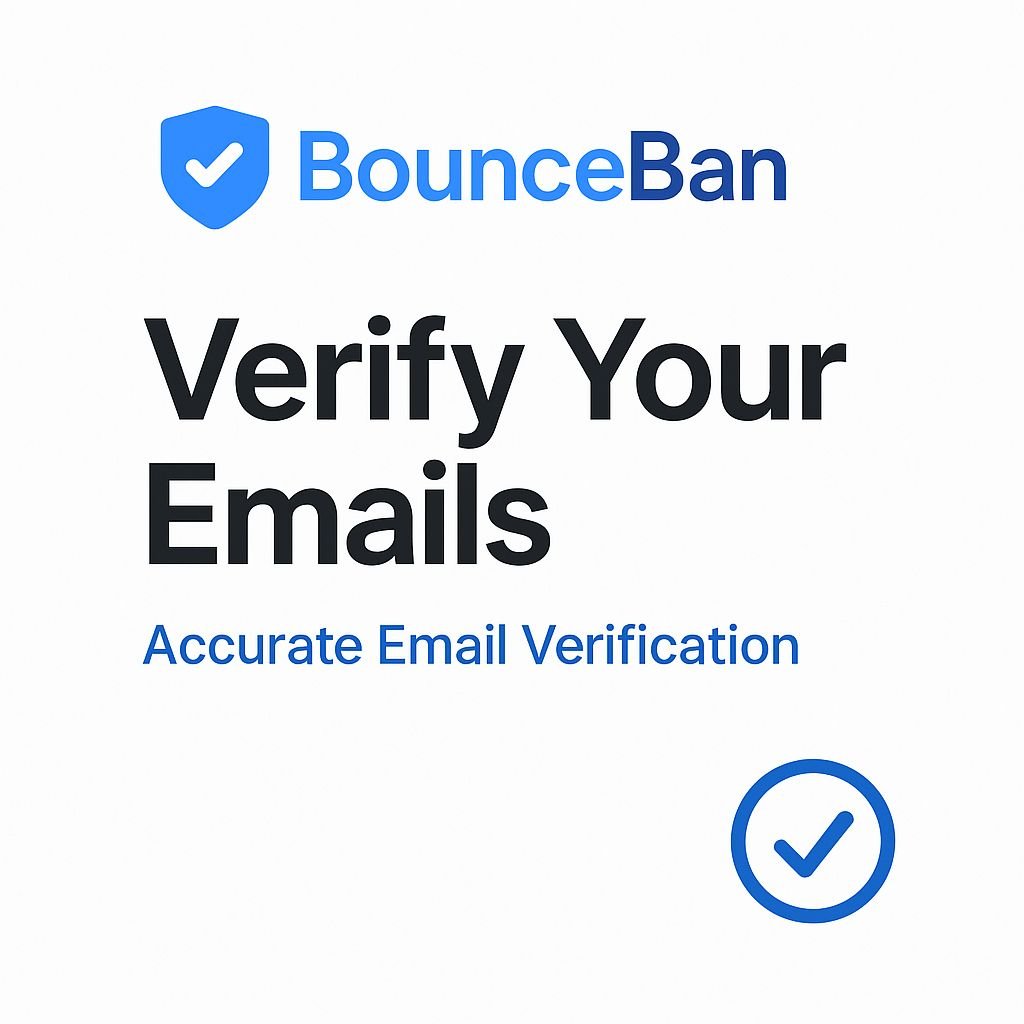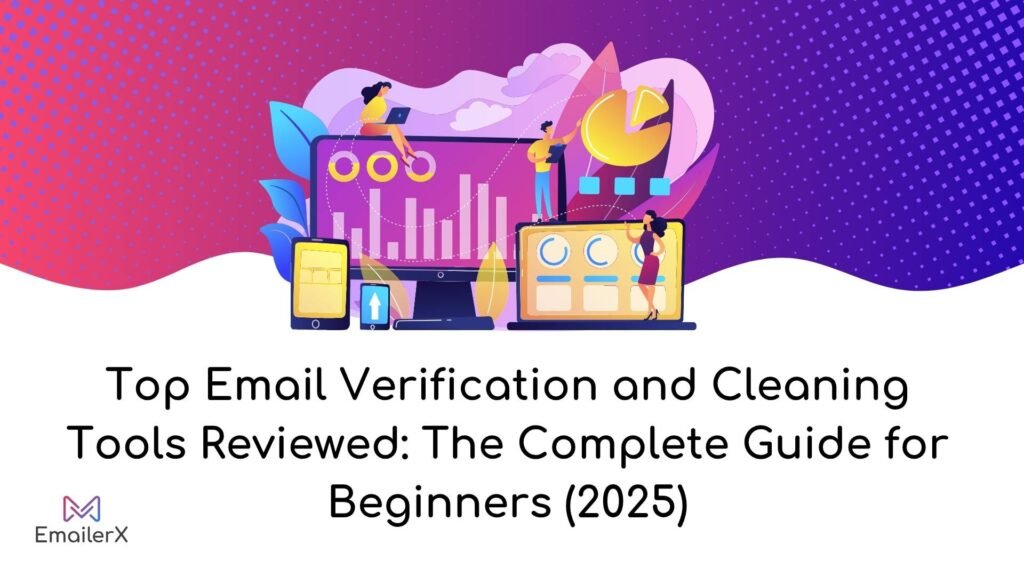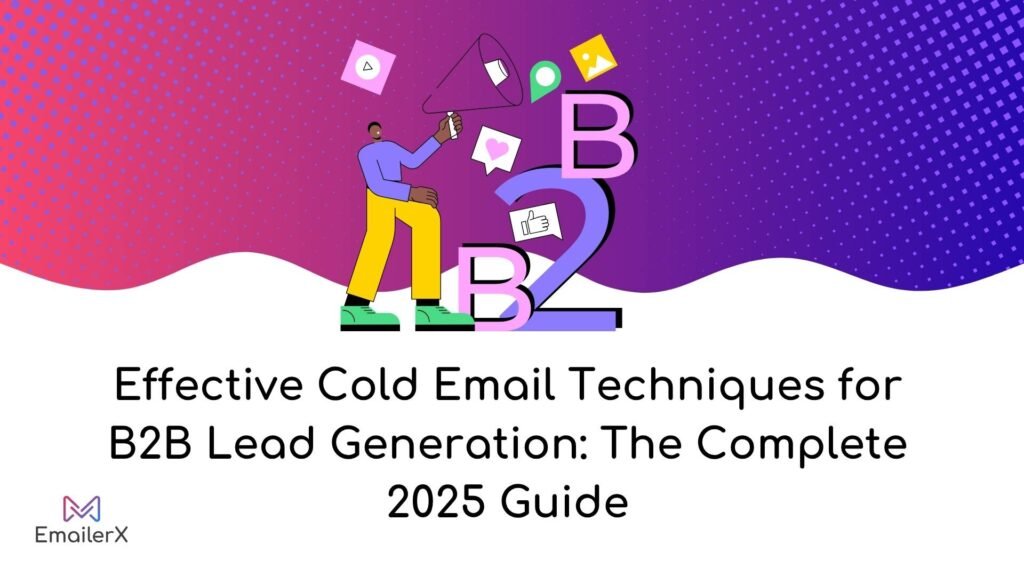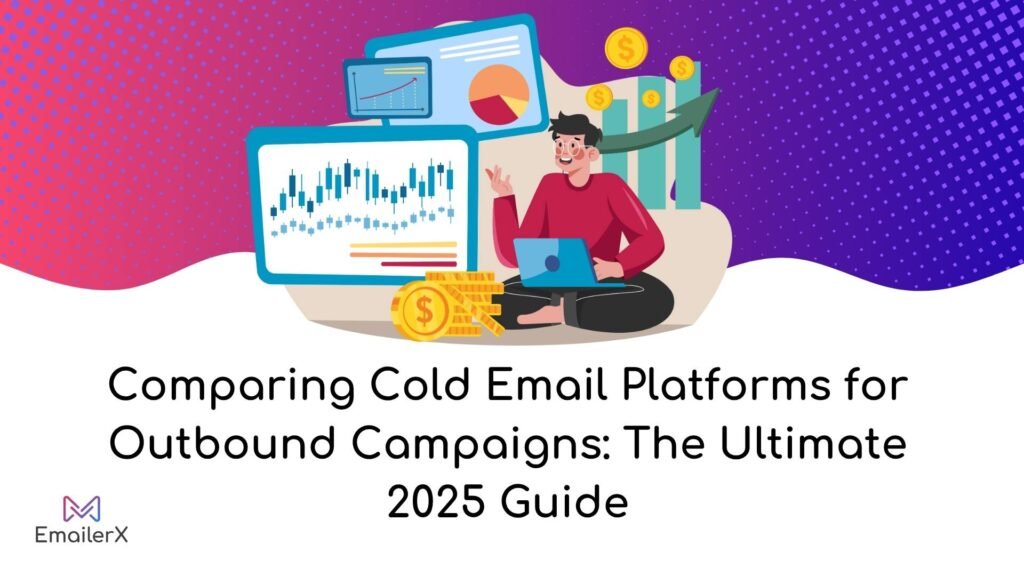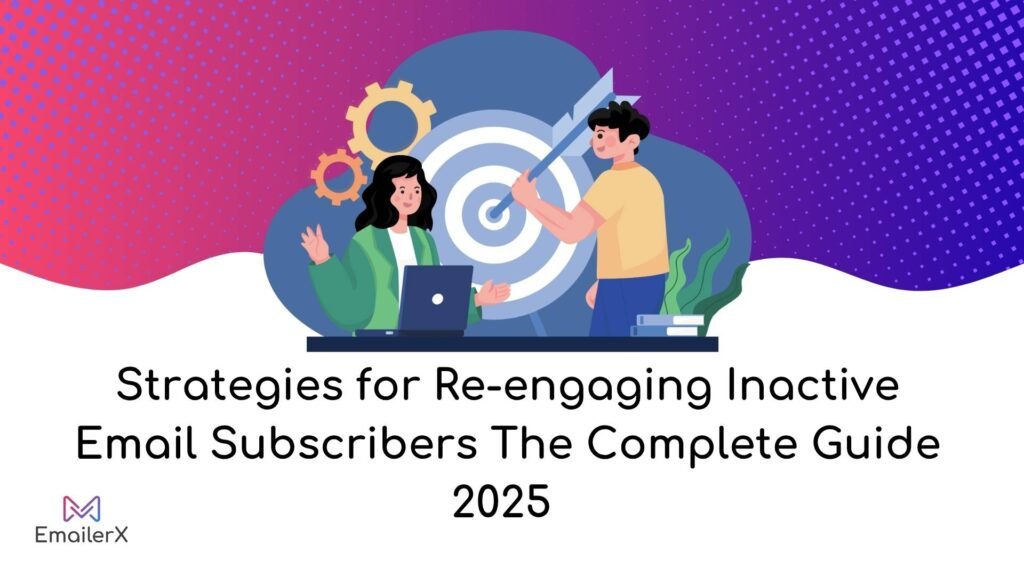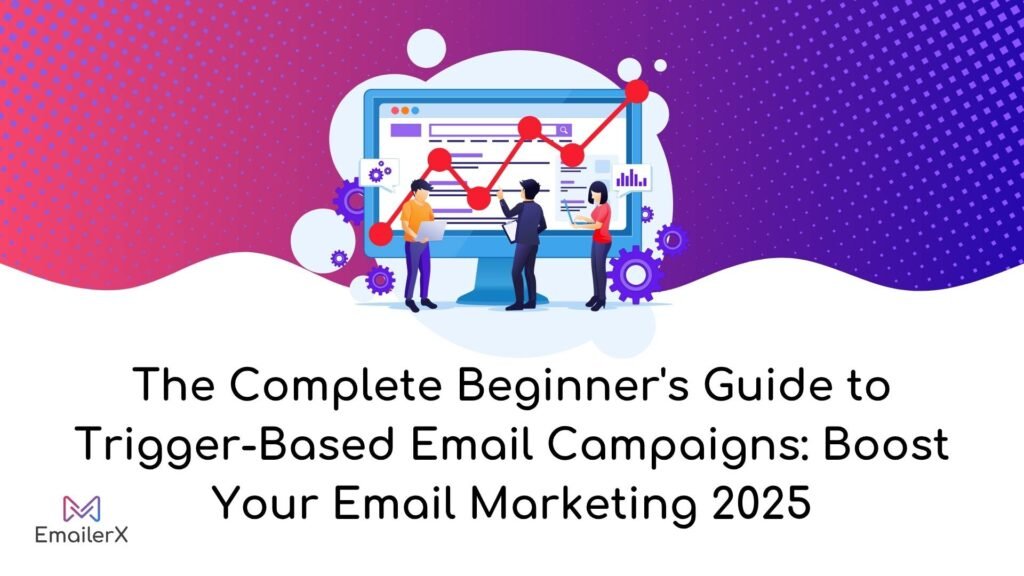In today’s competitive digital landscape, the success of your email marketing campaigns hinges on more than just hitting send – it requires deep insights into how your messages perform across every touchpoint of the customer journey.
Whether you’re running high-volume cold outreach campaigns or nurturing leads through sophisticated automation sequences, understanding your email metrics is crucial for optimizing deliverability, engagement, and conversions.

The right analytics platform can mean the difference between emails that land in the spam folder and those that drive meaningful business results.
With countless options available, from enterprise-grade solutions to specialized cold email tracking tools, identifying the top analytics tools that align with your specific outreach goals and technical requirements is essential for scaling your email marketing efforts effectively.
In this comprehensive analysis, we’ll explore the most powerful email performance analytics platforms that successful agencies and businesses rely on to transform their email data into actionable growth strategies.
Table of Contents
ToggleUnderstanding Email Performance Analytics with Top Analytics Tools
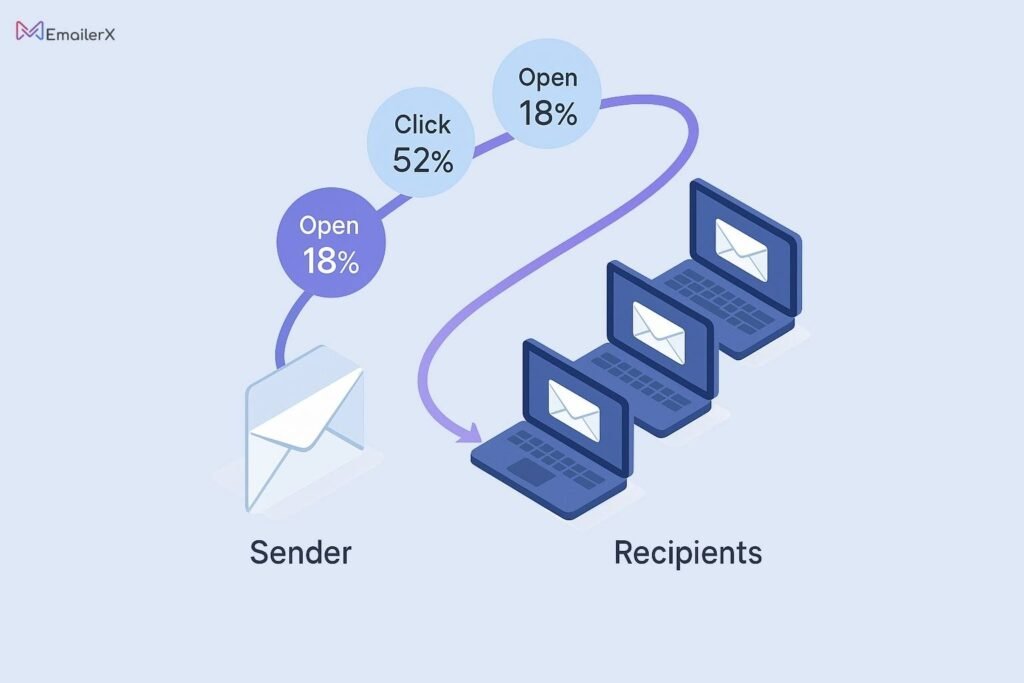
Email performance analysis is the process of collecting, measuring, and interpreting data from your email marketing campaigns to understand how well they’re performing.
Email performance measurement involves collecting and examining campaign data to evaluate key metrics like message opens, link engagement, and subscriber interactions, enabling marketers to assess effectiveness and implement informed optimizations based on concrete insights.
This analysis goes beyond simply knowing whether your emails were delivered. It involves understanding:
- Recipient behavior: How your audience interacts with your emails
- Message performance assessment: Identifying which communications generate the highest levels of audience interaction and desired actions
- Optimization opportunities: Areas where you can improve performance
- Return on investment evaluation: Quantifying the real business value and financial impact generated by your email marketing initiatives
Evolution of Top Analytics Tools

Email analytics has evolved significantly in recent years. At WWDC 2021, Apple revealed plans to eliminate email open tracking capabilities, fundamentally changing how marketers measure engagement metrics.
This news created ripples across email marketing. The announcement immediately sparked intense discussions across email marketing circles about the far-reaching consequences of this decision.
These privacy changes have made traditional metrics like open rates less reliable, pushing marketers to focus on more meaningful engagement metrics.
Why Top Analytics Tools Are Essential for Email Success

Understanding email performance is crucial for several reasons:
1. Strategic Decision Making with Top Analytics Tools
Without proper analytics tools, you’re making decisions based on assumptions rather than data. The top analytics tools enable informed decision-making across:
- Content strategy development
- Optimal send timing and frequency
- Advanced audience segmentation
- Continuous campaign optimization
2. ROI Maximization Through Top Analytics Tools
While email marketing offers excellent returns, success requires the right measurement tools. Top analytics tools help you:
- Identify your highest-performing campaigns and content types
- Eliminate ineffective spending and resource allocation
- Focus investments on proven strategies
- Demonstrate clear value to stakeholders and management
3. Audience Intelligence from Top Analytics Tools
Modern analytics platforms reveal crucial audience insights including:
- Content preferences and engagement patterns
- Optimal timing for maximum engagement
- Device and platform usage trends
- Geographic and demographic distribution
4. Competitive Edge with Top Analytics Tools
With marketers sending an average of 3-5 emails weekly to customers, using advanced analytics tools gives you significant advantages over competitors relying on basic reporting or guesswork for their email strategy decisions.
Key Metrics Tracked by Top Analytics Tools

Understanding key email metrics is fundamental to analyzing performance effectively. Here are the most important metrics every beginner should know:
Delivery Metrics
1. Delivery Rate
- Definition: The proportion of messages that successfully reach subscriber inboxes without bouncing or being blocked.
- Significance: Reflects the quality of your contact database and your standing as a trusted sender with email providers.
- Good benchmark: 95% or higher
- How to improve: Regular list cleaning, proper authentication, quality content
2. Bounce Rate
- What it is: Percentage of emails that couldn’t be delivered
- Types: Hard bounces (permanent failures) vs. soft bounces (temporary issues)
- Good benchmark: Less than 2%
- How to improve: Remove invalid addresses, verify email addresses before adding to lists
3. Open Rate
- What it is: Percentage of delivered emails that were opened
- Current challenges: Apple’s Mail Privacy Protection affects accuracy
- Industry average: 20-25% across industries
- How to improve: Compelling subject lines, sender name optimization, timing
4. Click-Through Rate (CTR)
- What it is: Percentage of delivered emails that received at least one click
- Why it’s important: Better indicator of engagement than open rates
- Industry average: 2-5% depending on industry
- How to improve: Clear CTAs, relevant content, mobile optimization
5. Click-to-Open Rate (CTOR)
- What it is: Percentage of opened emails that received clicks
- Why it matters: Measures content effectiveness independent of deliverability
- Good benchmark: 10-15%
- How to improve: Better content relevance, stronger CTAs, improved design
6. Conversion Rate
- What it is: Percentage of recipients who completed desired actions
- Importance: Directly tied to business goals
- Varies by: Industry, campaign type, audience
- How to track: UTM parameters, conversion tracking pixels, CRM integration
7. Revenue Per Email (RPE)
- What it is: Average revenue generated per email sent
- Calculation: Total revenue ÷ Number of emails sent
- Use case: E-commerce and sales-focused campaigns
- Optimization: Focus on high-value segments, personalization
8. Unsubscribe Rate
- What it is: Percentage of recipients who opt out
- Healthy rate: Less than 0.5%
- Red flags: Sudden spikes indicate content or frequency issues
- Action items: Review content strategy, segmentation, send frequency
9. Spam Complaint Rate
- What it is: Percentage of recipients who mark emails as spam
- Critical threshold: Above 0.1% can damage sender reputation
Prevention: Clear unsubscribe options, relevant content, proper permissions
Categories of Top Analytics Tools for Email Marketing

The top analytics tools for email marketing fall into several distinct categories:
1. Built-in Analytics
Most email service providers (ESPs) include basic analytics:
- Pros: Free, integrated, easy to use
- Cons: Limited features, basic reporting
- Best for: Beginners, small businesses
- Examples: Mailchimp, Constant Contact built-in reports
2. Standalone Analytics Platforms
Dedicated email analytics tools offer advanced features:
- Pros: Comprehensive reporting, advanced segmentation, custom dashboards
- Cons: Additional cost, learning curve
- Best for: Marketing agencies, enterprise users
- Examples: Litmus Analytics, Email on Acid
3. All-in-One Marketing Platforms
Comprehensive marketing suites with email analytics:
- Pros: Unified data, cross-channel insights, automation
- Cons: Higher cost, complexity
- Best for: Growing businesses, multi-channel marketers
- Examples: HubSpot, Marketo, Salesforce Marketing Cloud
4. Specialized Tracking Tools
Focus on specific aspects of email performance:
- Pros: Specialized features, detailed insights
- Cons: Limited scope, may require multiple tools
- Best for: Specific use cases (cold email, deliverability)
- Examples: Woodpecker, Yesware, SendGrid Analytics
Best Top Analytics Tools for Email Performance Tracking
Here are the best email analytics tools organized by experience level and budget:
Free and Budget-Friendly Options
1. Mailchimp Analytics
Best for: Small businesses and beginners Pricing: Free plan available, paid plans from $13/month
Key Features:
- Basic open and click tracking
- Audience insights and demographics
- A/B testing capabilities
- Mobile-friendly reports
- Social media tracking
Pros:
- User-friendly interface
- Comprehensive free plan
- Integration with 300+ apps
- Automated reporting
Cons:
- Limited advanced features on free plan
- Can become expensive as list grows
- Basic segmentation on lower tiers
2. Constant Contact Analytics
Best for: Small businesses and nonprofits Pricing: Starting at $12/month, free trial available
Key Features:
- Real-time reporting
- Click heatmaps
- Social sharing tracking
- Contact engagement history
- Mobile app for monitoring
Pros:
- Excellent customer support
- Easy-to-understand reports
- Good deliverability rates
- Nonprofit discounts available
Cons:
- Limited automation features
- Basic A/B testing
- No advanced segmentation
3. Klaviyo Analytics
Best for: E-commerce businesses Pricing: Free up to 250 contacts, then $20/month+
Key Features:
- Revenue attribution tracking
- Predictive analytics
- Customer lifetime value calculation
- Advanced segmentation
- Integration with 300+ e-commerce platforms
Pros:
- Powerful e-commerce integrations (Shopify, WooCommerce)
- Revenue-focused metrics
- AI-powered insights
- Detailed customer profiles
Cons:
- Learning curve for beginners
- Can be expensive for large lists
- E-commerce focused (less suitable for other industries)
4. ActiveCampaign Analytics
Best for: Growing businesses needing automation Pricing: Starting at $15/month
Key Features:
- Advanced automation reporting
- Goal tracking and conversion funnels
- Contact scoring and behavior tracking
- Split testing across entire campaigns
- CRM integration
Pros:
- Excellent automation capabilities
- Comprehensive contact insights
- Good value for money
- Strong deliverability
Cons:
- Interface can be overwhelming initially
- Limited design templates
- Customer support response times
5. HubSpot Marketing Analytics
Best for: Comprehensive marketing teams Pricing: Free tier available, Marketing Hub starts at $45/month
Key Features:
- Attribution reporting across all channels
- Custom dashboard creation
- Advanced A/B testing
- Lead scoring and lifecycle tracking
- Integration with HubSpot CRM
Pros:
- Comprehensive marketing suite
- Powerful CRM integration
- Excellent reporting and dashboards
- Strong educational resources
Cons:
- Can be expensive for full features
- Steep learning curve
- May be overkill for simple email needs
6. Salesforce Marketing Cloud Analytics
Best for: Large enterprises Pricing: Custom pricing, typically $1,250+/month
Key Features:
- Einstein AI-powered insights
- Journey analytics across touchpoints
- Predictive modeling
- Advanced segmentation
- Enterprise-grade security
Pros:
- Extremely powerful analytics
- AI-driven insights
- Scales to any size
- Integration with Salesforce ecosystem
Cons:
- Very expensive
- Complex implementation
- Requires dedicated resources
- Steep learning curve
7. Woodpecker Analytics
Best for: Cold email and sales outreach Pricing: Starting at $29/month
Key Features:
- Advanced cold email tracking
- Reply categorization and sentiment analysis
- Deliverability monitoring
- A/B testing for outreach sequences
- CRM integrations
Pros:
- Specialized for cold outreach
- Excellent deliverability features
- Reply management tools
- Good customer support
Cons:
- Limited to cold email use cases
- No marketing automation
- Fewer integrations than general ESPs
8. Litmus Analytics
Best for: Email designers and agencies Pricing: Starting at $99/month
Key Features:
- Email client testing and previews
- Engagement analytics with geographic data
- Spam testing
- Brand monitoring
- Team collaboration tools
Pros:
- Industry-leading email testing
- Detailed engagement insights
- Excellent for agencies
- Strong reputation in email industry
Cons:
- Expensive for small businesses
- Focused on testing rather than sending
- Limited automation features
Advanced Features in Modern Top Analytics Tools

As you become more sophisticated in email marketing, consider these advanced features:
1. AI-Powered Insights
Modern tools use artificial intelligence to provide:
- Predictive analytics: Forecasting campaign performance
- Content optimization: AI-suggested improvements
- Send time optimization: ML-determined optimal sending times
- Churn prediction: Identifying at-risk subscribers
2. Cross-Channel Attribution
Understanding email’s role in the customer journey:
- Multi-touch attribution: Credit email across multiple touchpoints
- Customer journey mapping: Visualize complete paths to conversion
- Channel interaction analysis: How email works with other channels
3. Advanced Segmentation Analytics
Deeper audience insights:
- Behavioral segmentation: Based on email interactions
- Predictive segmentation: ML-driven audience groups
- Dynamic segments: Auto-updating based on behavior
- Engagement scoring: Sophisticated subscriber rating systems
4. Real-Time Analytics
Live performance monitoring:
- Real-time dashboards: Live campaign performance
- Instant notifications: Alerts for anomalies or opportunities
- Live heat maps: Real-time click tracking
- Performance alerts: Automated warnings for issues
Selecting the Right Top Analytics Tools for Your Business

Choosing from the top analytics tools depends on several key factors:
Consider Your Business Size and Needs
Small Business (Under 1,000 contacts)
- Recommended: Built-in ESP analytics or free tiers
- Focus on: Basic metrics, ease of use, cost
- Suggested tools: Mailchimp, Constant Contact, ConvertKit
Growing Business (1,000-10,000 contacts)
- Recommended: Professional-grade tools with automation
- Focus on: Segmentation, automation, integrations
- Suggested tools: ActiveCampaign, Klaviyo, Campaign Monitor
Enterprise (10,000+ contacts)
- Recommended: Enterprise solutions with advanced features
- Focus on: Scalability, security, custom reporting
- Suggested tools: HubSpot, Salesforce Marketing Cloud, Marketo
Budget Considerations
Create a realistic budget that includes:
- Tool subscription costs
- Implementation and setup time
- Training and education
- Ongoing maintenance and optimization
Integration Requirements
Ensure your chosen tool integrates with:
- Your website platform (WordPress, Shopify, etc.)
- CRM system (Salesforce, HubSpot, etc.)
- E-commerce platform (if applicable)
- Other marketing tools you currently use
Feature Prioritization
Rank these features by importance to your business:
- Basic reporting (opens, clicks, bounces)
- Advanced segmentation
- Automation capabilities
- A/B testing features
- Revenue attribution
- Multi-channel tracking
Implementation Guide for Top Analytics Tools
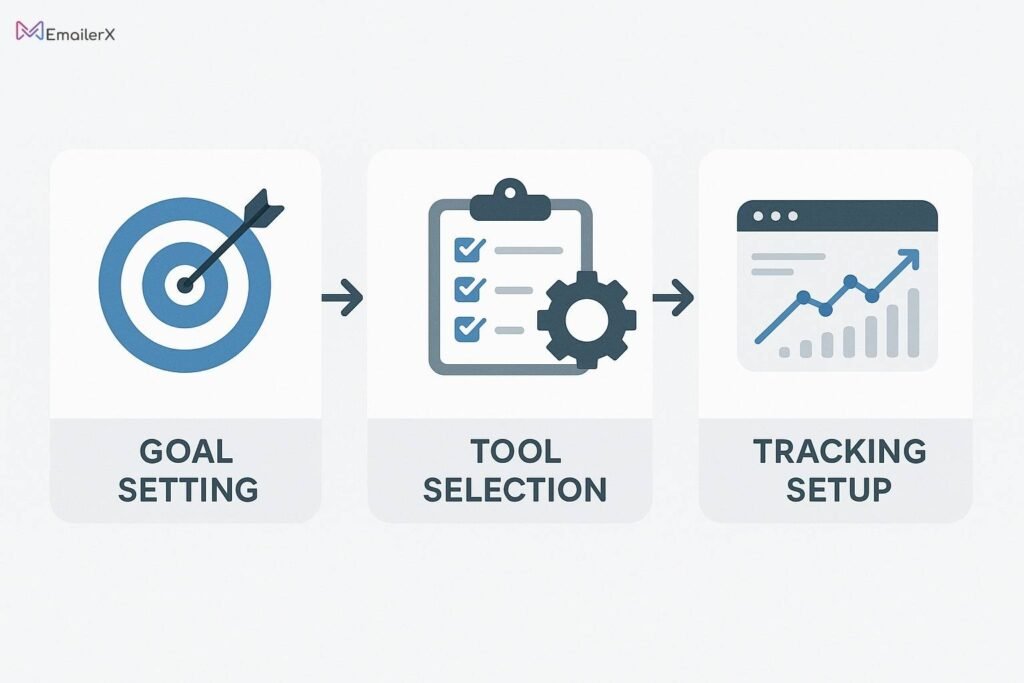
Follow these steps to implement effective email analytics:
Step 1: Define Your Goals
Prior to choosing your analytics platform, define your specific objectives:
- Awareness goals: Open rates, reach, list growth
- Engagement goals: Click rates, time spent, social shares
- Conversion goals: Sales, sign-ups, downloads
- Retention goals: Subscriber lifetime value, churn rates
Step 2: Choose Your Analytics Stack
Based on your goals and budget:
- Primary tool: Your main email service provider
- Secondary tools: Specialized analytics or testing tools
- Integration tools: Zapier or native integrations for data flow
Step 3: Implement Tracking
Set up proper tracking infrastructure:
UTM Parameters
Use consistent UTM codes for all email links
Conversion Tracking
Set up conversion pixels or events:
- Google Analytics goals
- Facebook Pixel events
- CRM opportunity tracking
List Segmentation
Create meaningful segments from the start:
- Source-based: How subscribers joined
- Behavior-based: Engagement levels
- Demographic: Age, location, preferences
- Purchase history: Past buyers, cart abandoners
Step 4: Create Reporting Workflows
Establish regular reporting routines:
Daily Monitoring
- Deliverability issues
- Campaign performance alerts
- Spam complaints or unsubscribes
Weekly Analysis
- Campaign performance review
- A/B testing results
- List health metrics
Monthly Strategic Review
- Overall performance trends
- ROI analysis
- Strategy adjustments
- Tool optimization
Common Email Performance Issues and Solutions

Understanding common problems helps you quickly identify and fix issues:
Low Open Rates
Symptoms: Open rates declining or consistently below industry averages
Common Causes:
- Poor subject lines
- Sender reputation issues
- Wrong send times
- List quality problems
Solutions:
- A/B testing subject lines: Test different approaches
- Sender name optimization: Use recognizable sender names
- Send time testing: Find optimal timing for your audience
- List cleaning: Remove inactive subscribers regularly
Low Click-Through Rates
Symptoms: People open emails but don’t click
Common Causes:
- Weak call-to-action (CTA)
- Poor content relevance
- Mobile optimization issues
- Overwhelming design
Solutions:
- CTA optimization: Make buttons clear and compelling
- Content personalization: Tailor content to segments
- Mobile testing: Ensure emails work on all devices
- Design simplification: Focus on key messages
High Unsubscribe Rates
Symptoms: Sudden spikes in unsubscribes
Common Causes:
- Frequency too high
- Content not matching expectations
- Poor segmentation
- Acquired lists
Solutions:
- Frequency testing: Find optimal send frequency
- Expectation setting: Clear opt-in messaging
- Better segmentation: More targeted content
Preference centers: Let subscribers choose frequency
Deliverability Problems
Warning signs: Poor inbox placement rates and messages filtering into junk folders
Common Causes:
- Poor sender reputation
- Authentication issues
- Content triggering spam filters
- List quality problems
Solutions:
- Authentication setup: SPF, DKIM, DMARC
- Content optimization: Avoid spam trigger words
- List hygiene: Regular cleaning and validation
Gradual volume increases: Warm up new domains/IPs
Email Analytics Best Practices
Follow these proven practices for successful email performance analysis:
1. Focus on Actionable Metrics
Don’t get lost in vanity metrics. Focus on metrics that drive business decisions:
- Revenue per email over open rates
- Engagement quality over quantity
- Long-term trends over single campaign performance
2. Benchmark Against Yourself
Although sector standards provide useful context, your own past campaign results offer more meaningful comparison points:
- Track month-over-month changes
- Compare similar campaigns
- Monitor seasonal patterns
3. Test Continuously
Incorporate systematic experimentation as a core component of your email approach:
- Split testing: Message headers, body content, action buttons, and delivery timing
- Multivariate testing: Multiple elements simultaneously
- Long-term testing: Sustained strategy changes
4. Integrate with Other Data Sources
Email doesn’t exist in isolation:
- Website analytics: Track post-click behavior
- CRM data: Connect emails to sales outcomes
- Customer service data: Understand full customer experience
5. Automate Where Possible
Set up automated reporting and alerts:
- Performance dashboards: Real-time visibility
- Exception alerts: Notifications for unusual patterns
- Regular reports: Automated weekly/monthly summaries
6. Document Your Learnings
Keep track of what works:
- Campaign notes: Record strategies and results
- Best practices library: Collect proven approaches
Failure analysis: Learn from unsuccessful campaigns
Conclusion and Next Steps

Analyzing email performance is essential for email marketing success, but it doesn’t have to be overwhelming. Start with the basics—understanding key metrics like delivery rates, click-through rates, and conversions—then gradually add more sophisticated analytics as your needs grow.
Your Action Plan
Week 1: Foundation
- Choose your primary email analytics tool based on your budget and needs
- Set up basic tracking and UTM parameters
- Define your key performance indicators (KPIs)
Week 2-4: Implementation
- Create your first automated reports
- Set up A/B testing for subject lines
- Begin weekly performance reviews
Month 2-3: Optimization
- Implement advanced segmentation
- Add conversion tracking
- Start testing send times and content types
Ongoing: Mastery
- Explore advanced features like predictive analytics
- Integrate with other marketing tools
- Develop sophisticated attribution models
Recommended Starting Tools by Budget
- Free: Mailchimp free plan or your ESP’s built-in analytics
- Under $50/month: ActiveCampaign or Campaign Monitor
- $50-200/month: Klaviyo (e-commerce) or HubSpot Marketing
- Enterprise: Salesforce Marketing Cloud or Adobe Campaign
Resources for Continued Learning
- Learning Center: Guides and case studies {EmailerX.com}
- Email Marketing Industry Reports: Annual benchmarking studies
- Email Marketing Communities: Join forums and groups for peer learning
Remember, email analytics is a journey, not a destination. Start with the basics, focus on metrics that matter to your business goals, and continuously test and optimize. With the right tools and approach, you’ll be able to significantly improve your email marketing performance and drive better results for your business.
Frequently Asked Questions
What is the most important email metric to track?
While it depends on your goals, click-through rate (CTR) is generally the most valuable metric for beginners. Unlike open rates, which can be unreliable due to privacy changes, CTR directly measures engagement and intent. It shows whether your content resonates with your audience and drives action.
How often should I analyze my email performance?
For beginners, weekly analysis is sufficient. Review each campaign within 24-48 hours of sending to catch any immediate issues, then do a comprehensive weekly review to identify trends and opportunities. Monthly strategic reviews help you make bigger picture adjustments.
Are open rates still useful after Apple’s privacy changes?
Open rates are less reliable than before but still provide directional insights. Focus on trends rather than absolute numbers, and use open rates in combination with other metrics like click rates and conversions for a complete picture.
What’s a good email open rate for beginners?
Industry averages vary widely, but 20-25% is generally considered good for most industries. However, focus more on your own performance trends than industry benchmarks, especially when starting out.
How can I improve my click-through rates?
Focus on: clear and compelling CTAs, relevant content that matches your subject line, mobile-optimized design, personalization, and testing different approaches to see what resonates with your audience.
Should I remove subscribers who don’t open my emails?
Not immediately. Consider a re-engagement campaign first. If subscribers don’t respond to 2-3 re-engagement attempts over 3-6 months, then consider removing them to maintain list health.
What’s the difference between click rate and click-to-open rate?
Click rate is the percentage of delivered emails that received clicks. Click-to-open rate is the percentage of opened emails that received clicks. CTOR helps you understand content effectiveness independent of deliverability issues.
How do I track email ROI effectively?
Set up proper conversion tracking using UTM parameters, connect your email tool to your analytics platform, track revenue attribution, and calculate: (Revenue from Email – Email Marketing Costs) / Email Marketing Costs × 100
Can I use multiple email analytics tools together?
Yes, many marketers use a combination of tools. For example, your ESP for basic metrics, Google Analytics for website behavior, and specialized tools for deliverability or testing. Just ensure data consistency across platforms.
What should I do if my email performance suddenly drops?
First, check for deliverability issues (authentication, blacklists). Then review recent changes to content, frequency, or lists. Check if there are external factors (holidays, industry events) affecting performance. Document the issue and systematically test solutions.
How important is mobile optimization for email analytics?
Extremely important. Over 60% of emails are opened on mobile devices. Ensure your emails render properly on mobile, and track mobile-specific metrics to understand your mobile audience’s behavior.
What’s the best way to A/B testing for beginners?
Start simple: test one element at a time (subject line, CTA, send time). Use a significant sample size (at least 1,000 subscribers per variant), run tests for statistical significance, and document results for future reference

